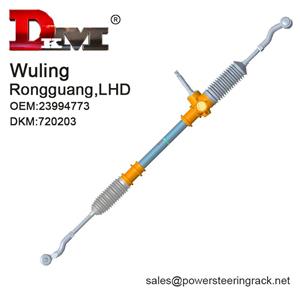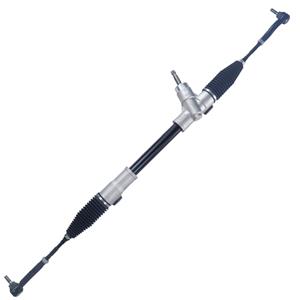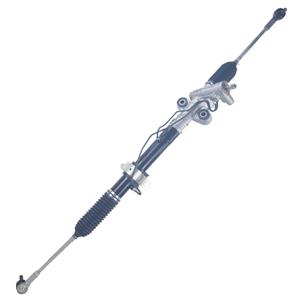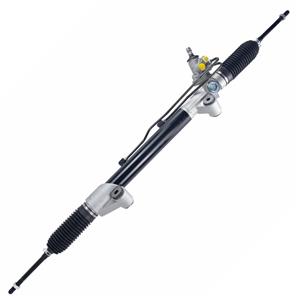Power Steering Pump vs. Power Steering Rack: What's the Relationship?
Power steering is an integral part of the steering system of modern cars. It improves driving comfort and control by reducing the amount of effort required by the driver to turn the steering wheel. The two core components of the power steering system are the power steering pump and the power steering rack.
Although they are both important components of the power steering system, their functions and roles are completely different. This article will explore the relationship between the power steering pump and the power steering rack, and analyze their respective working principles and how they work together in the steering system.
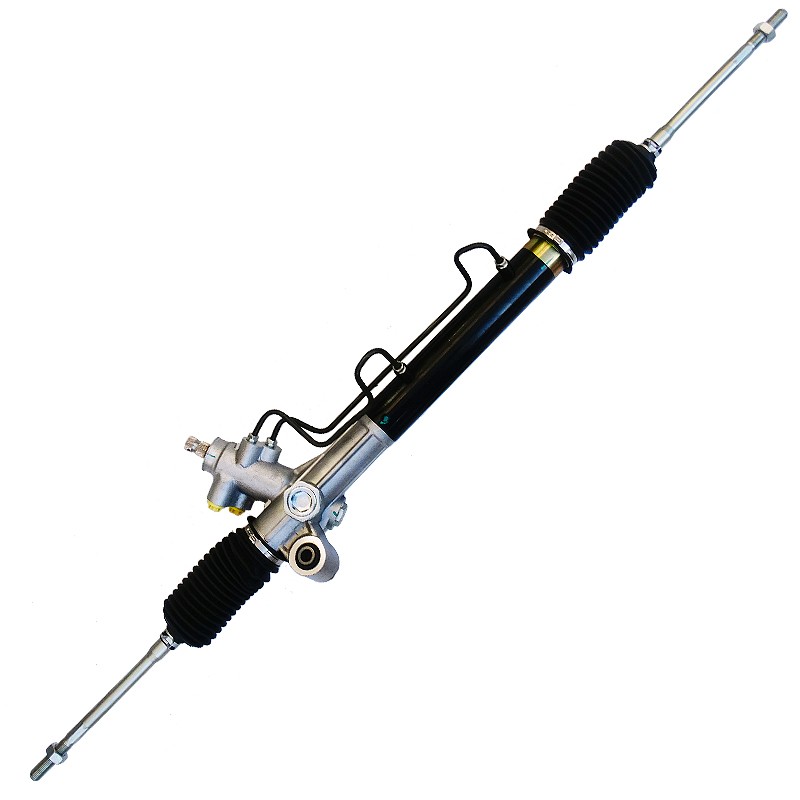
What are the functions and working principles of the power steering pump?
The power steering pump is a key component in the power steering system, responsible for providing the required hydraulic pressure for the entire system. Hydraulic pressure is the core principle of realizing power steering. By increasing the hydraulic power, the driver can turn the steering wheel more easily, especially when driving at low speeds or parking.
Where does the power source of the power steering pump come from?
The power steering pump is usually driven by the engine through a belt. When the engine is started, the belt drives the steering pump to rotate, thereby generating hydraulic pressure. The function of the pump is to pressurize the hydraulic oil in the steering system and deliver the high-pressure oil to both sides of the power steering rack. The generation and delivery of this hydraulic pressure allows the rack to obtain additional power while receiving input from the driver, thereby reducing the difficulty of steering.
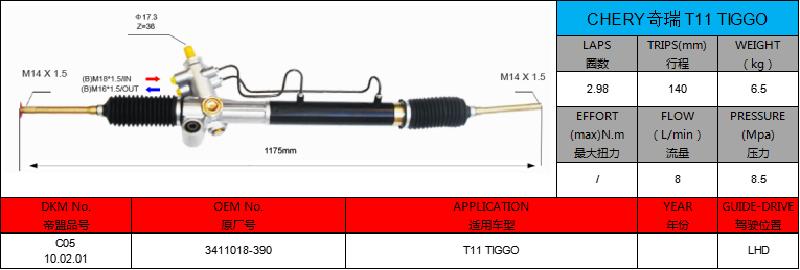
What are the types of power steering pumps?
There are many types of power steering pumps, the most common of which include gear pumps, vane pumps, and piston pumps. Different types of pumps have different designs and working principles, but their basic function is to provide stable hydraulic pressure. Among them, the vane pump is the most widely used type. It generates hydraulic pressure inside the pump housing by rotating blades, with high efficiency and compact structure.
What is the importance of the power steering pump?
The power steering pump is not only the power source of the power steering system, but also directly affects the responsiveness and controllability of the steering system. If the pump fails or the pressure is insufficient, the steering operation will become heavy and the driver will need to apply more force when steering. In addition, the design and performance of the pump also affect the flow and pressure of the hydraulic oil, which indirectly determines the overall performance of the power steering.
What is the function and working principle of the power steering rack?
The power steering rack is another core component in the steering system, which converts the rotational motion of the steering wheel into the steering action of the wheels. The design of the rack enables it to receive hydraulic assistance from the power steering pump while providing mechanical transmission, making the steering process easier and more efficient.
Basic structure of rack and pinion
The power steering rack consists of a rack and a pinion. The pinion is connected to the steering wheel. When the driver turns the steering wheel, the pinion rotates and drives the linear motion of the rack. The linear motion of the rack is transmitted to the wheels through the connecting rod system, thereby realizing the steering action. This process is not only a mechanical transmission, but more importantly, the hydraulic assistance plays a key role in this process.
Introduction of hydraulic assistance
In the power steering rack, hydraulic assistance is achieved through a hydraulic cylinder. The hydraulic cylinder is installed on one side of the rack. When the hydraulic pressure provided by the power steering pump acts on the hydraulic cylinder, the thrust generated by the hydraulic cylinder moves the rack in the corresponding direction. In this way, the steering rack not only relies on mechanical input, but also reduces the force required for steering through hydraulic assistance. This design greatly reduces the resistance felt by the driver when turning the steering wheel, making the steering operation easier.
Precise Control and Feedback
Another important function of the power steering rack is to provide precise steering control and road feel feedback. Although hydraulic power assist reduces the steering burden, it does not completely deprive the driver of a sense of control over the vehicle. Through fine hydraulic adjustment, the power steering rack can ensure easy steering while retaining a certain amount of road feedback, allowing the driver to accurately judge the road conditions.

Power Steering Pump Vs. Power Steering Rack: What is the relationship between them?
The power steering pump and the power steering rack work closely together in the entire power steering system to complete the vehicle's steering operation. The relationship between the two can be analyzed from the following aspects:
Cooperation between power source and actuator
The power steering pump is the power source of the system and is responsible for providing the required hydraulic pressure to the power steering rack. The power steering rack is the actuator, which converts the hydraulic pressure provided by the pump into actual steering action. Without the power steering pump, the power steering rack will not be able to obtain the necessary hydraulic power assistance, and the steering operation will become difficult. Similarly, without the power steering rack, the hydraulic pressure of the pump cannot be effectively applied. Therefore, there is a mutually dependent and closely coordinated relationship between the two.
Pressure regulation and distribution
The power steering pump is not only responsible for generating hydraulic pressure, but also for adjusting the pressure according to the steering demand. For example, when the vehicle is driving at low speed or parking, the steering needs more power, and the pump needs to provide higher pressure. When driving at high speed, the steering demand is reduced, and the pump needs to reduce the output pressure. The power steering pump achieves this function through the pressure regulating valve to ensure that the power steering rack can get the appropriate hydraulic power in different driving conditions.
The power steering rack receives and uses hydraulic pressure through hydraulic cylinders and pistons. When the driver turns the steering wheel, the hydraulic pressure acts on the piston in the hydraulic cylinder, pushing the rack to move and complete the steering operation. Therefore, the pressure distribution and regulation between the power steering pump and the rack are the key to ensure the efficient operation of the system.
Fault diagnosis and maintenance
Due to the close cooperation between the power steering pump and the rack, the faults between the two often affect each other. For example, if the power steering pump leaks or has insufficient pressure, the power steering rack will not get enough hydraulic power, making the steering operation heavy. Similarly, if the hydraulic cylinder or seal inside the power steering rack is damaged, it may cause hydraulic oil leakage or power failure, further affecting the operation of the pump. Therefore, when performing fault diagnosis and maintenance of the steering system, it is usually necessary to check the status of both the pump and the rack at the same time to ensure that the overall function of the system is normal.
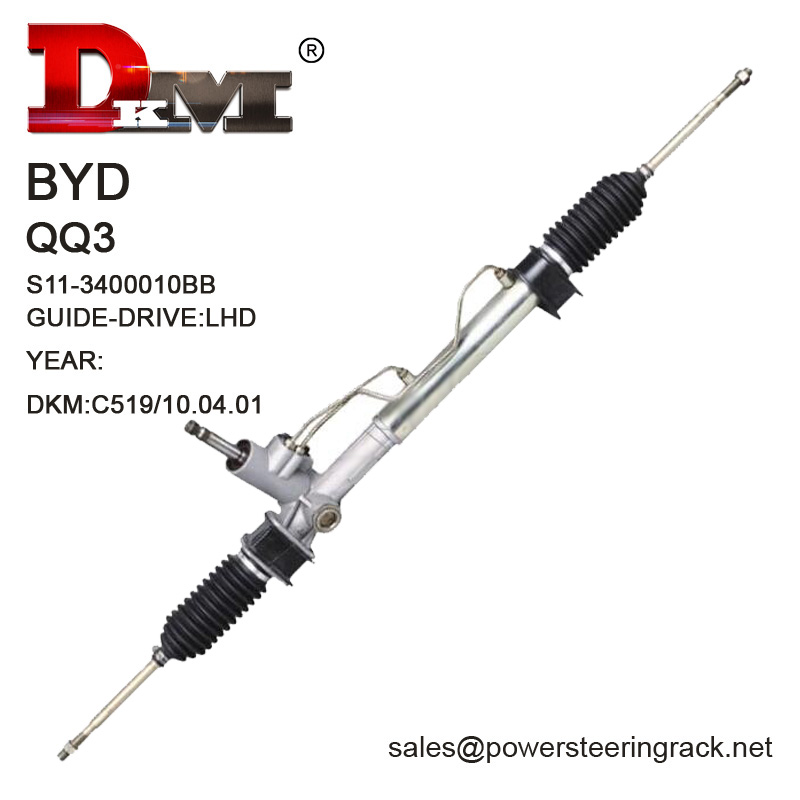
Power Steering Pump Vs. Power Steering Rack: Differences and Linkages
Although the power steering pump and the power steering rack work together in the same system, their functions, structures, and working principles are significantly different.
Functional Differences
The main function of the power steering pump is to provide hydraulic pressure and is the "heart" of the system. The power steering rack is the actuator, which converts hydraulic pressure into mechanical movement and is the "hands and feet" of the system. The pump provides power support for the rack, while the rack converts this power into actual steering effect.
Structural Differences
The power steering pump is usually composed of components such as rotors, blades, valve bodies, and pump housings. Its structure is complex and precise and requires regular maintenance. The structure of the power steering rack is relatively simple, consisting of racks, gears, hydraulic cylinders, and pistons. Although there are more mechanical parts, the hydraulic part is also very important.
Maintenance Requirements
The maintenance of the power steering pump focuses on the inspection and replacement of hydraulic oil and the tension adjustment of the belt. The power steering rack, on the other hand, requires attention to the condition of the seals, the wear of the gears, and the working condition of the hydraulic cylinder. Although the maintenance requirements of the two are different, they are both directly related to the overall performance of the power steering system.

